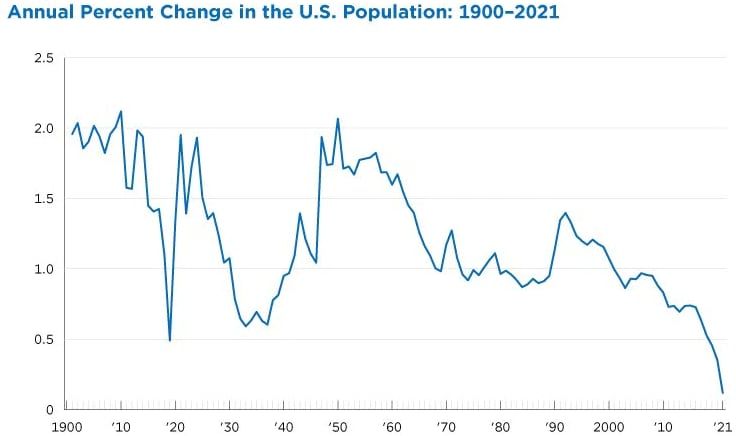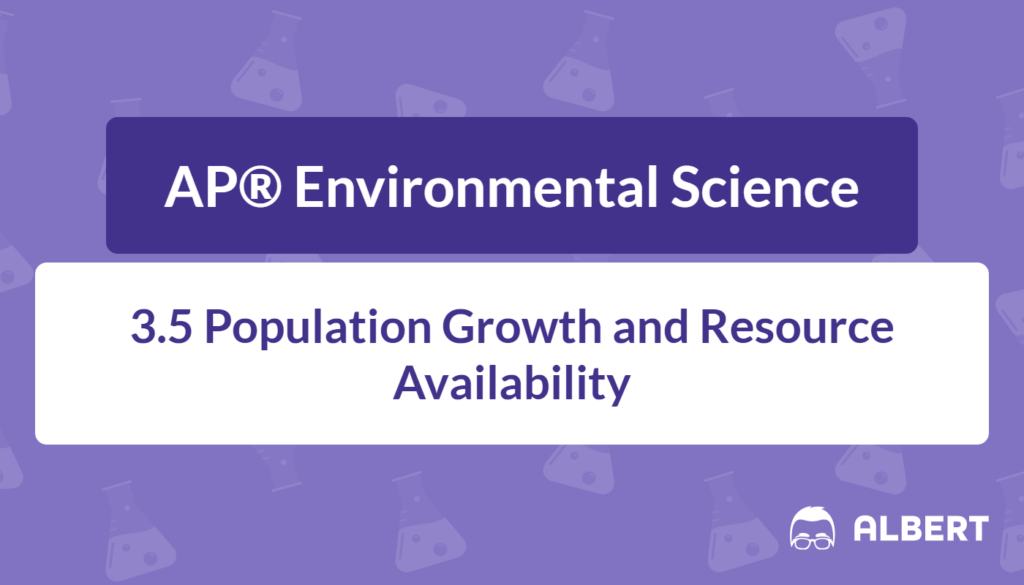What We Review
Introduction
Population growth and resource availability are fundamental concepts in AP® Environmental Science. They shape how communities of organisms expand or contract in response to the environment around them. Therefore, examining these ideas provides a clearer understanding of why certain species thrive while others struggle. Moreover, these concepts play a crucial role in predicting how human populations might impact ecosystems in the future.
This article breaks down the major factors influencing population growth, resource availability, and the concept of carrying capacity. In addition, each section includes examples to illustrate how these factors interact in real‑world scenarios. By exploring these dynamics, students can gain a greater appreciation for how living systems balance themselves to avoid ecological collapse.
Understanding Population Growth
Population growth refers to any change in the number of individuals in a given population over time. Typically, populations can grow exponentially when resources are plentiful, meaning that the growth rate accelerates the larger the population becomes. However, real-world populations often encounter limits that prevent indefinite exponential increases.
Factors That Drive Population Growth
Several key factors determine how a population will change over time:
- Fecundity: This term describes the potential reproductive capacity of an individual or population. High fecundity typically allows for faster population expansion. However, high fecundity alone does not guarantee continuous growth if other resources are insufficient.
- Mortality: The rate at which individuals in a population die plays a significant role in shaping overall population size. A high mortality rate can decrease population growth, especially if it coincides with resource shortages.
When both fecundity and mortality remain balanced, a population may reach a steady state. Conversely, an imbalance in these factors can push population numbers up or down.

Example: Human Population Growth Over the Last Century
Historically, human populations were limited by high mortality rates from disease and lack of reliable food sources. However, advances in medicine, agriculture, and technology have drastically lowered mortality rates and improved fecundity conditions. As a result, human populations have grown rapidly—even exponentially—in many regions over the past 100 years.
In mathematical terms, an exponentially growing population can be approximated by the following population growth model:
N(t) = N_0 , e^{rt}Here,
- N(t) is the population size at time t,
- N_0 is the initial population size,
- r is the intrinsic growth rate (often influenced by fecundity and mortality),
- e is the base of the natural logarithm.
Resource Availability: The Foundation of Population Growth
Resource availability refers to the quantity and quality of essential materials, such as food, water, and shelter, that a population needs in order to survive and reproduce. Therefore, sufficient access to these resources strongly influences whether a population grows, remains stable, or declines.
Types of Resources Affecting Population Growth
- Food: Adequate food ensures that organisms can maintain healthy growth and reproduction. However, overconsumption or scarcity can lead to population crashes.
- Water: Access to safe, clean water is vital for life. Changes in water availability often trigger shifts in population distribution.
- Space: Even if food and water are abundant, limited physical space can restrict how large a population can become. Crowded conditions may also increase mortality through disease spread and stress in many species.
Example: How Availability of Food Impacts a Deer Population
Consider a region of forest providing abundant plants, young shoots, and water sources. Over several seasons, the local deer population might rise. However, if overgrazing occurs because of the high number of deer, the vegetation may be depleted faster than it can regenerate. This resource shortage would then reduce the habitat’s ability to support further growth. Ultimately, the deer population could decline as mortality levels increase from starvation, disease, or migration to other areas.
Carrying Capacity: Limits to Growth
The concept of carrying capacity is crucial in population studies. It encompasses the maximum population size that an environment can sustain indefinitely without degrading or exhausting resources to the point that they are no longer self-renewing.
Definition of Carrying Capacity
Carrying capacity is not a fixed number; it can change if environmental conditions shift, such as improvements in agricultural techniques or the introduction of renewable energy solutions that alter resource dynamics. However, carrying capacity represents a general threshold beyond which continued population growth may become unsustainable.
Factors Influencing Carrying Capacity
- Resource Abundance: The more resources are available, the higher the carrying capacity.
- Technology and Adaptations: For humans, technological advances can increase resource production and, by extension, carrying capacity.
- Environmental Conditions: Climate fluctuations, natural disasters, and ecosystem changes can raise or lower the carrying capacity.
Example: The Carrying Capacity of an Environment for Rabbits Versus Wolves
A grassland can generally support a larger population of rabbits than wolves, given that rabbits feed on abundant plant material. Wolves require sufficient prey (such as rabbits) and space for hunting. If too many wolves occupy a territory, the rabbit population may dwindle, leading to competition and eventual wolf population declines. Therefore, the carrying capacity for wolves is lower because of their need for a more substantial resource base.
The Impact of Resource Scarcity
When resources become limited, populations do not simply continue to grow; they adjust, often through increased mortality or decreased fecundity. Therefore, resource scarcity can trigger shifts in population dynamics that bring numbers back into alignment with the available resource base.
Consequences of Overpopulation and Resource Depletion
- Increased Competition: Individuals may struggle more intensely for limited food and space.
- Habitat Degradation: Overuse of resources can lead to soil erosion, deforestation, or water pollution, further reducing available resources.
- Population Crash: In extreme cases, resource scarcity can cause population numbers to plummet rapidly.
Example: The Impact of Drought on Fish Populations in Rivers
A prolonged drought reduces the water levels and oxygen content of rivers. As a result, fewer fish can survive in the confined habitat, leading to an increase in mortality. Additionally, fewer fish can reproduce given the reduced space and diminished water quality. Through these mechanisms, the fish population declines, underscoring the direct link between resource availability, fecundity, and mortality.
Population Dynamics: A Balancing Act
Populations depend heavily on available resources, but resource stocks can also be influenced by population size. Consequently, this reciprocal relationship helps maintain homeostasis within ecosystems, although human intervention can disrupt these balances.
Relationship Between Resource Availability and Population Dynamics
When resources become abundant, populations often experience a rapid increase, sometimes beyond the carrying capacity. However, once population size exceeds the available supply, resource depletion sets in. Therefore, population numbers naturally adjust as mortality rises or fecundity falls, returning the species to a level more in line with environmental limits.
How Populations Adjust to Resource Changes
- Migration: Some species move to new areas where resources are more abundant.
- Dormancy or Hibernation: Certain animals reduce their metabolic demand during lean periods.
- Social Structures: In some species, social hierarchies form to allocate resources efficiently and limit conflicts.
Example: Boom‑and‑Bust Cycles in Locust Populations
Locusts can swell to enormous numbers during periods of rain and abundant vegetation. Once the rains end and plants become scarce, the enormous locust swarms cannot be sustained. The result is a population crash or migration event. During dry periods, new locust generations remain smaller until another series of favorable conditions returns.
Conclusion
Population growth and resource availability are tightly linked, illustrating a push‑and‑pull mechanism that ensures ecosystems do not exceed their capacity to sustain life. Carrying capacity acts like a boundary, keeping population numbers in check. However, human activities, such as deforestation, water diversion, and industrial expansion, can shift these limits and disrupt normal population dynamics. Therefore, studying population growth models, resource limits, and environmental feedback loops is essential for developing sustainable management practices.
Keeping these insights in mind can help illuminate the complex ways in which living systems organize and regulate themselves. Students are encouraged to explore additional case studies in other ecosystems—such as how carbon cycle changes affect plant and animal life or how renewable energy projects affect local habitats—to further refine their understanding of population dynamics and resource availability.
Key Vocabulary
- Population Growth: The increase in the number of individuals within a population over time.
- Fecundity: The potential reproductive capacity of an individual or population in a given environment.
- Mortality: The death rate within a population, influencing how its size changes.
- Carrying Capacity: The maximum number of individuals that an environment can support indefinitely without environmental harm.
- Resource Availability: The quantity and quality of essential materials (food, water, space) necessary for a population to survive and reproduce.
Encouraging further exploration, students may compare how different species respond to shifting resource distributions. Examining these dynamics on both local and global scales can reveal important patterns and guide more ecologically conscious decisions.
Sharpen Your Skills for AP® Environmental Science
Are you preparing for the AP® Environmental Science test? We’ve got you covered! Try our review articles designed to help you confidently tackle real-world AP® Environmental Science problems. You’ll find everything you need to succeed, from quick tips to detailed strategies. Start exploring now!
- AP® Environmental Science: 3.1 Review
- AP® Environmental Science: 3.2 Review
- AP® Environmental Science: 3.3 Review
- AP® Environmental Science: 3.4 Review
Need help preparing for your AP® Environmental Science exam?
Albert has hundreds of AP® Environmental Science practice questions, free response, and full-length practice tests to try out.








